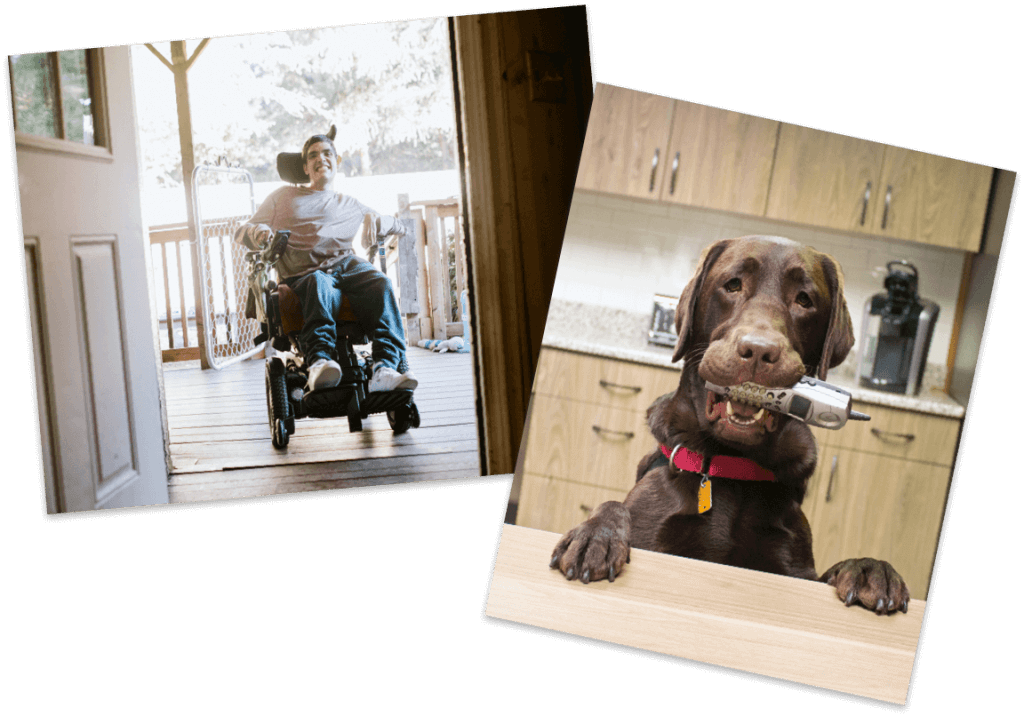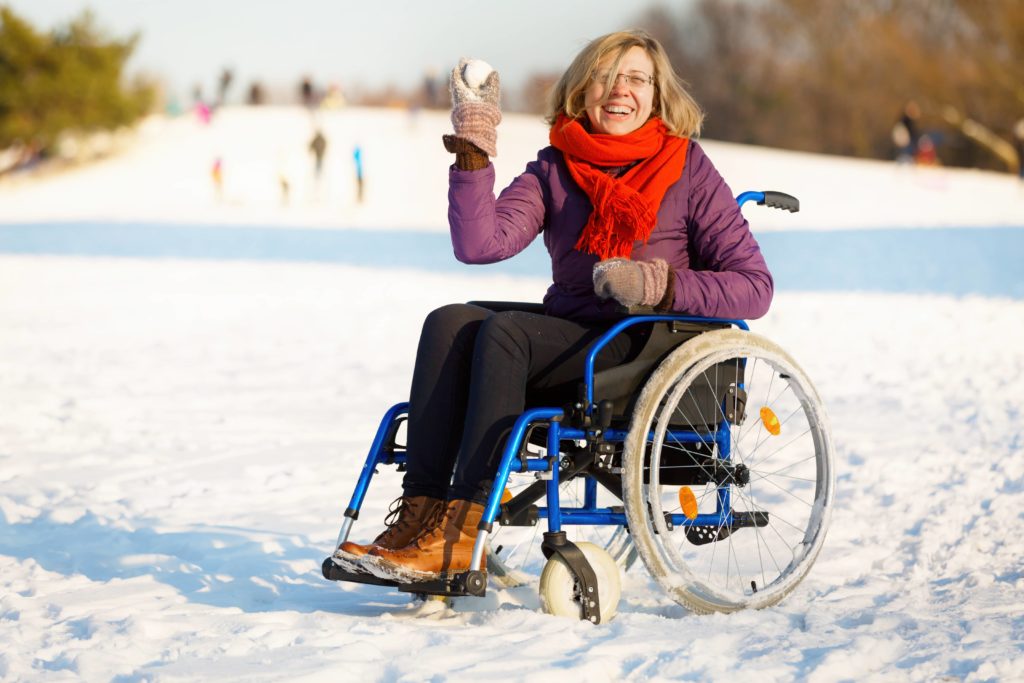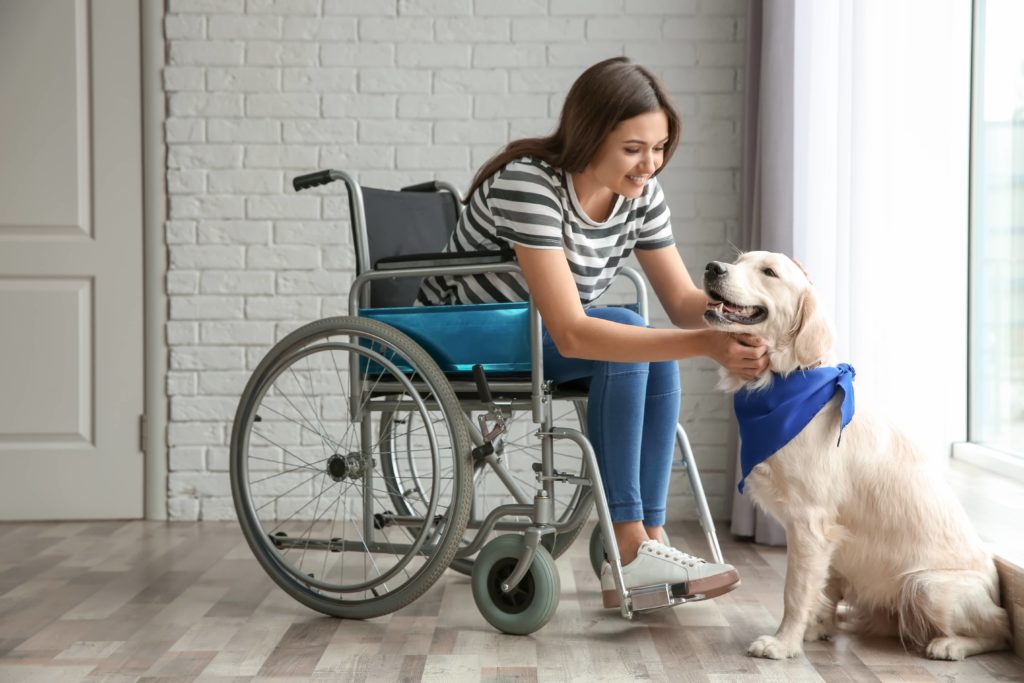Winter weather can be dangerous for anyone, but these risks are particularly acute for seniors and people with disabilities. However, there are a plethora of ways you can prepare yourself for extreme temperatures and inclement weather. In this blog, we’ll review winter safety tips for people with disabilities to help you and your loved ones stay safe during the coldest months of the year.
Dress In Warm Clothing
Shirts & Jackets
One of the best ways to stay warm in cold weather is by wearing multiple layers of loose, lightweight clothing. Layering multiple pieces allows you to remove clothing or add to it depending on your body temperature. As air is trapped between your layers of clothing, it provides extra insulation that you don’t get with a single heavy layer.
Avoid cotton clothing, which doesn’t have any insulating properties and won’t dry once it gets wet. This can be very dangerous because wet cotton can quickly lead to hyperthermia. Instead, opt for moisture-wicking, man-made fabrics that pull moisture from your body and dry quickly.
Hats & Scarves
We lose most of our body heat through our heads, making hats one of your most important winter accessories. It’s also a good idea to wear a scarf to cover your mouth and nose and protect your lungs from freezing air. While earmuffs are also helpful, keep in mind that they don’t keep heat from leaving your head.

Gloves & Mittens
You also lose a lot of body heat through your hands, so you’ll want to invest in a good pair of gloves. Consider thermal driving gloves with thinner material at the fingertips, which can help prevent slipping as you grip a wheelchair or walker. If opening your fingers is difficult, go with a pair of mittens instead. You can also put hand warmers in your pockets and touch them whenever your hands get cold.
Boots & Socks
A good pair of snow boots and wool socks go a long way towards keeping you comfortable in cold weather. Make sure your boots have a good tread that grips the snow and helps you avoid slipping. Your footwear should also be well-insulated and waterproof to keep your feet warm and dry. If they’re not too hot against your skin, you may also want to invest in a pair of boot warmers.
Closely Monitor Your Physical Health
People with disabilities and the elderly are often more susceptible to health problems in cold weather, including hypothermia and frostbite. As a result, it’s important to keep close tabs on your physical health during winter. The tips below can help you stay healthy in the colder months:
- Always wear sunscreen outside to avoid sunburn from the sun’s reflection off of snow.
- Dehydration can make you cold and dry out your skin, so be sure to drink lots of water.
- Put petroleum jelly on any exposed skin when you go outside, which insulates moisture and helps prevent chapping.
- Set your thermostat for at least 68 degrees to avoid developing hypothermia.

UDS Can Help You Live A Fuller Life With Our Comprehensive Services:
Planning & Support – Our dedicated planning & support teams help manage the care and services you need.
Personal Care & Independence – We’ve helped people with disabilities live more independently in their own homes since 1965.
Enrichment & Life Skills – Our variety of programs is dedicated to building skills for living well with a disability.
Hypothermia
A major aspect of winter safety for senior citizens and people with disabilities is preventing hypothermia, which is an unsafe drop in body temperature. Seniors are more likely to develop hypothermia due to their slower metabolisms and reduced ability to produce body heat. It can also be difficult for older people to determine when their body temperature has dropped too low. Symptoms of hypothermia include sleepiness, confusion, slurred speech, cold extremities, and violent shivering.
Frostbite
You should also be on the lookout for frostbite, which manifests as white, waxy skin that feels hard and numb. People with circulation issues and heart disease are particularly susceptible to frostbite. Frostbite typically affects your face and extremities, but you should cover up every part of your body when you’re outside. If your skin turns dark or red and starts to hurt, go inside immediately to warm up.
Prepare Your Vehicle In Case You Have to Travel
While it’s best to avoid traveling during inclement weather, it’s still important to be prepared for driving. Make sure your car is stocked with a travel survival kit, which should include:
- Extra winter clothing
- Blanket and/or sleeping bag
- Fully-charged cell phone
- Snow shovel
- Ice scraper
- Water
- Nutritious snacks
- Flashlight or matches
- Extra batteries for assistive devices
- Flares
- Jumper cables
- Spare tire and jack
- Sand or cat litter
- First aid kit
You should also be sure to winterize your car before the first winter storm. This includes things like putting on snow tires, switching to cold weather windshield wiper fluid, and adding a steering wheel cover. Depending on your budget, you might also want to look into seat warmers and a remote car starter.
Prepare Your Wheelchair for Snow & Ice

Just like your vehicle, your wheelchair should be ready to go whenever winter weather strikes. You can install snow tires on your wheelchair, which are softer and easily grip snow to avoid getting stuck. You should also have an emergency kit in a backpack that you can attach to your wheelchair and keep close at hand.
If you use a walker or cane, make sure it has clean rubber tips so it won’t slip out from under you on snow or ice. Don’t use rollators on the snow, as their slick wheels can slip easily. If you use a cane, you can outfit the tip with an ice pick-like attachment that adds extra grip as you walk.
Fully Stock Your Home Emergency Kit
Another crucial winter safety tip for people with disabilities is to have a three-day emergency kit. This should include items like:
- Non-perishable food
- Bottled water
- Extra winter clothing
- Blankets
- Table salt, sand, or cat litter
- Snow shovel
- First aid kit
If you use medical equipment that requires electricity, make sure you have a backup power source, like a portable generator. If you rely on battery-operated devices, make sure all of your batteries are fully charged. You should also refill your prescriptions ahead of time in case you aren’t able to leave your home for an extended period.
Make Sure Appliances & Alarms Are In Working Order
The risk of fire and carbon monoxide poisoning is higher in winter, so it’s important to make sure everything is in working order. Put fresh batteries in your fire alarms and CO detectors and test them to make sure they’re operating properly.
If you use a fireplace, wood stove, or gas appliances, carefully monitor their condition and functionality. They should also be correctly ventilated, inspected, and cleaned regularly to avoid accidental fires or the release of deadly carbon monoxide. Be sure to keep at least one charged fire extinguisher near any heat source.
Take Care of Your Service Animal

Winter preparedness for people with disabilities doesn’t stop with you. Rock salt and some other types of ice melt can poison service animals and damage their paws. That means it’s important to put boots on your dog or apply paw wax before going onto any treated surfaces. When clearing areas outside your home, use table salt or clay cat litter, both of which are safe for animals.
If you and your service animal will be outside for an extended period, outfit them with a dog coat or blanket, along with boots. This ensures their safety and comfort, while also protecting them from hypothermia and frostbite. You should also have a blanket in your car to cover them when traveling in cold weather.
Have An Emergency Plan in Place
Our last — but certainly not least — winter safety tip for people with disabilities is having a comprehensive emergency plan. Here are a few of the most important ways you can prepare your emergency plan:
- Create an updated list of emergency contacts with names, phone numbers, and addresses.
- Determine how you’ll communicate with your primary care physician for remote care and prescription refills, if necessary.
- Join your electric provider’s list of life-sustaining equipment customers.
- Sign up for any applicable medical and social needs registries in your community.
- If you receive regular medical treatments, find out your provider’s emergency plan.
- Create a detailed list of your medications and any medical devices you use.
- Talk to your medical supply company about back-up power sources and emergency oxygen replacements.